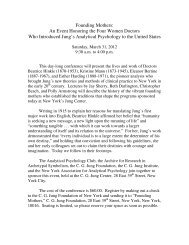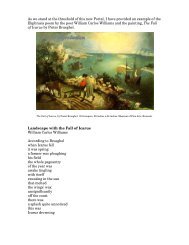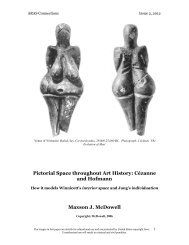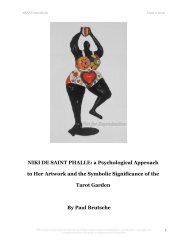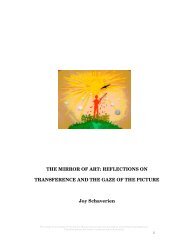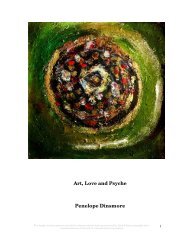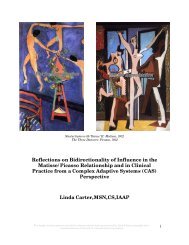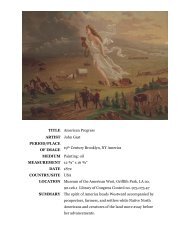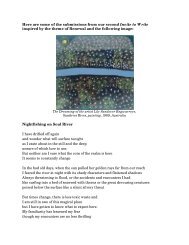The Mandala in Tibetan Buddhism by Martin Brauen - ARAS
The Mandala in Tibetan Buddhism by Martin Brauen - ARAS
The Mandala in Tibetan Buddhism by Martin Brauen - ARAS
You also want an ePaper? Increase the reach of your titles
YUMPU automatically turns print PDFs into web optimized ePapers that Google loves.
syllables, or <strong>by</strong> dots or small circles. Some mandalas may be completely empty,<br />
and these naturally demand greater powers of imag<strong>in</strong>ation. Two-dimensional<br />
mandalas are either pa<strong>in</strong>ted on a cloth ground or on a flat surface <strong>by</strong> spr<strong>in</strong>kl<strong>in</strong>g<br />
colored powders. Whereas the latter types are dismantled at the end of the<br />
relevant mandala ritual, pa<strong>in</strong>ted mandalas can be stored away for future use.<br />
<strong>The</strong> palace and its central area<br />
In the great majority of mandalas known to us, the <strong>in</strong>nermost sacral area<br />
is surrounded <strong>by</strong> a square. Each of the four outer sides of the square is<br />
<strong>in</strong>terrupted <strong>in</strong> the middle <strong>by</strong> a T-shape. <strong>The</strong>se represent entrance gates, s<strong>in</strong>ce the<br />
square <strong>in</strong> the mandala is none other than a build<strong>in</strong>g or the ground plan of a<br />
palace.<br />
Amoghapasa Five-deity <strong>Mandala</strong>. Nepal; 16 th<br />
century. Pigments on cloth. Rub<strong>in</strong> Museum of<br />
Art.<br />
<strong>The</strong> images <strong>in</strong> this paper are strictly for educational use and are protected <strong>by</strong> United States copyright laws. Unauthorized<br />
use will result <strong>in</strong> crim<strong>in</strong>al and civil penalties.<br />
4



